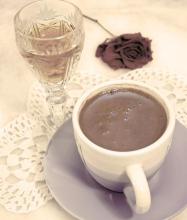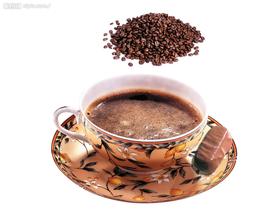Introduction to the description of Flavor of Fine Coffee Bean Manor in Dominica Coffee Variety producing area
In 1677, about 4,000 French lived in eleven villages in the western part of the island. In 1697, France and Spain ceded the western part of the island to France under the Treaty of Leswick of the Great Alliance War, officially recognizing French sovereignty over Haiti in the west of the Spanish island, and calling the eastern part of the Spanish island Santo Domingo. France's continued development of the agricultural economy on Hispaniola and the introduction of African slave farming made Haiti a very productive French colony by the end of the 18th century, when Haiti's population had reached more than 500,000, and at this time, blacks accounted for nine out of every ten Haiti people, making them the majority race. The Spanish colony of Santo Domingo in the southeast has a population of 150,000, and the population ratio between the two places is quite different. Jean L'Oreal arrived in Santo Domingo in 1801. He represented the French government in abolishing slavery. In 1802 Napoleon sent troops to conquer the island and ruled for several months. In October 1802, mixed races and blacks revolted against French rule and defeated the French in 1803. On January 1, 1804, the rebels declared Santo Domingo independent and established the Republic of Haiti. However, the defeated French still occupied the eastern part of Santo Domingo. When the French invaded Spain in 1808, the rebels in Santo Domingo on the eastern part of the island, aided by Britain and Haiti, allied with Spain at that time, finally repelled the French forces and made Santo Domingo a Spanish colony again
Dominican coffee is grown in upland and lowlands and tastes slightly different. Highland plants are sour, but rich in taste; lowland plants are less sour and smoother in taste. In recent years, fine coffee is popular. Some Dominican estates produce high-quality coffee beans with rich aroma, mellow taste and moderately bright acidity. It is not far from the more famous Puerto Rico beans or Jamaica beans. It is also worth tasting coffee. Dominican coffee beans have moderate acidity and rich fruit flavors
Dominican Republic is located in the West Indies in the eastern part of the island of Haiti, west of the Republic of Haiti, north of the Atlantic Ocean, south of the Caribbean Sea. With an area of about 49000 square kilometers and a population of 7.1 million, the Dominican Republic coexists with the Republic of Haiti on an island adjacent to Haiti. Like its neighbours, the Dominican Republic had a history of revolution and poverty, but now had democratic elections and relative stability.
In the early 18th century, coffee was introduced to Dominica from Martinique, and the northern regions, represented by Ciba, and the southern regions, including Ocayabani Santo Domingo, produced fine coffee. Among them, Santo Domingo and Bani produced coffee, almost synonymous with Domica coffee, is world-famous quality coffee. Santo Domingo coffee, characterized by fresh and elegant, full particles, excellent acidity, pleasant aroma, so value for money. Dominican coffee selection is generally done manually. The main basis for selection is according to the fullness of coffee particles, whether uniform, and then divided into grades. Generally speaking, coffee with full and uniform particles is easier to preserve. Only the purest and most evenly grained coffee beans can be roasted to represent the best coffee in the country. Coffee was introduced to Domica from Martinique in the early 18th century, and the northern regions, represented by Cibaio, and the southern regions, including Ocayabani Santo Domingo, produced fine coffee. Among them, Santo Domingo and Bani produced coffee, almost synonymous with Domica coffee, is world-famous quality coffee. Santo Domingo coffee, characterized by fresh and elegant, full particles, excellent acidity, pleasant aroma, so value for money. Dominican coffee selection is generally done manually. The main basis for selection is according to the fullness of coffee particles, whether uniform, and then divided into grades. Generally speaking, coffee with full and uniform particles is easier to preserve. Only the purest and most uniform coffee beans can be roasted to represent the best, finest coffee in the country.
Unlike coffee grown in Haiti, coffee grown in the Dominican Republic is mostly washed, a sign of high quality. Miniga Coffee uses water washing to treat coffee beans, so that the quality of treated coffee beans is more guaranteed. The coffee beans treated with water have retained more original flavor than the drying method, and the aroma is pure and soft.

Important Notice :
前街咖啡 FrontStreet Coffee has moved to new addredd:
FrontStreet Coffee Address: 315,Donghua East Road,GuangZhou
Tel:020 38364473
- Prev

Introduction to the characteristics of high-quality coffee beans in the producing area of Costa Rican Yerzaro coffee flavor varieties
Costa Rican coffee has full particles, ideal acidity and unique strong flavor. Costa Rica's coffee industry, originally controlled by the Costa Rican Coffee Industry Company (InstitutodelCafdeCostaRica, ICAFE), has been taken over by the official Coffee Committee (OficinadelCaf). In exported coffee, those products that are considered to be of substandard quality are used in blue.
- Next

Characteristics of Puerto Rican Coffee Variety producing area introduction of Fine Coffee Bean Flavor Manor
Since 1972 the United Nations Special Committee on Decolonization has repeatedly reaffirmed the inalienable right of the people of Puerto Rico to self-determination and independence. In 1977, U.S. president Gerald Rudolph Ford submitted the Puerto Rico statehood Act 1977 to Congress, advocating that Puerto Rico should be turned into the 51st state of the United States. In November 1982, President Ronald Wilson Reagan issued a statement supporting Poland.
Related
- Detailed explanation of Jadeite planting Land in Panamanian Jadeite Manor introduction to the grading system of Jadeite competitive bidding, Red bid, Green bid and Rose Summer
- Story of Coffee planting in Brenka region of Costa Rica Stonehenge Manor anaerobic heavy honey treatment of flavor mouth
- What's on the barrel of Blue Mountain Coffee beans?
- Can American coffee also pull flowers? How to use hot American style to pull out a good-looking pattern?
- Can you make a cold extract with coffee beans? What is the right proportion for cold-extracted coffee formula?
- Indonesian PWN Gold Mandrine Coffee Origin Features Flavor How to Chong? Mandolin coffee is American.
- A brief introduction to the flavor characteristics of Brazilian yellow bourbon coffee beans
- What is the effect of different water quality on the flavor of cold-extracted coffee? What kind of water is best for brewing coffee?
- Why do you think of Rose Summer whenever you mention Panamanian coffee?
- Introduction to the characteristics of authentic blue mountain coffee bean producing areas? What is the CIB Coffee Authority in Jamaica?

